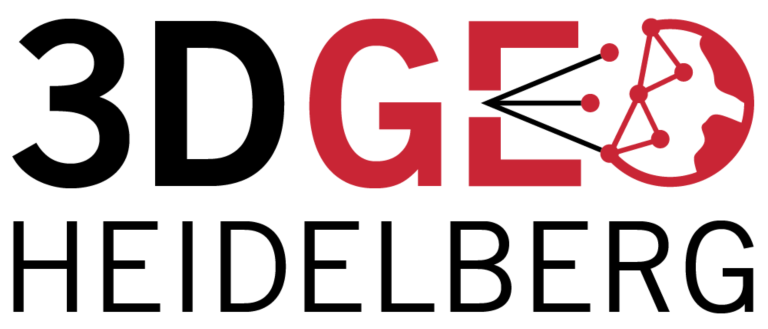Category: Research
-
Option for wheelchair routing now available within OpenRouteService
We are happy to announce that the first version of the wheelchair routing profile is now available online within OpenRouteService and goes into beta testing phase. Currently, there is a separate version (http://openrouteservice.org/wheelchair-2.1/) for testing that contains this new feature, which currently covers Germany only. However, after beta testing, it will also be available via…
-
CAP4Access e-Newsletter No. 2, 2015 (Part 2) – toilets, survey, crowdcrafting and news
This is the Second Part of the CAP4Access e-Newsletter No 2. 2015. The First Part can be found here. (It needed to be splitted in two parts for technical reasons) Finding accessible toilets made easy People in wheelchairs and other people with mobility impairments must be able to find an accessible toilet when needed. What…
-
Geo-reCAPTCHA: Crowdsourcing large amounts of geographic information from earth observation data
With the Geo-reCAPTCHA we present a new concept for crowdsourcing of vast amounts of geoinformation by micro-mapping tasks. The paper can be downloaded free of charge (until 22 May 2015). In our study we investigated the possibilities and limitations of capturing building footprints via Geo-reCAPTCHA based on remote sensing imagery. We could analyze more than…
-
CAP4Access e-Newsletter No. 2 – 2015 (Part 1, Geoinfo for Mobility Impaired
CAP4Access e-Newsletter No. 2, 2015 (Part 1) First tools released + + + “Mapping parties” raise awareness for disability issues Dear Readers, The CAP4Access project has kick-started its second year by publishing first versions of a range of tools. They are intended to raise awareness about accessibility of the built environment and for providing concrete…
-
How to detect post-harvest growth from terrestrial LiDAR point clouds in precision agriculture? Read the new paper about comparative classification analysis
The new paper “Comparative classification analysis of post-harvest growth detection from terrestrial LiDAR point clouds in precision agriculture” has just been finally released in the ISPRS Journal of Photogrammetry and Remote Sensing. http://dx.doi.org/10.1016/j.isprsjprs.2015.03.003 Citation Koenig, K., Höfle, B., Hämmerle, M., Jarmer, T., Siegmann, B. & Lilienthal, H. (2015): Comparative classification analysis of post-harvest growth detection…
-
History Scanned in 3D – Jupiter Column of Ladenburg
Within our interdisciplinary collaborative research project MUSIEKE (Multidimensional Perceptibility of Cultural Heritage) the Jupiter Column (“Iupittergigantensäule”) of Ladenburg was scanned in 3D and in very high detail for the first time. Our colleagues from the IWR (FCGL Group of Hubert Mara) performed the measurement campaign. In this report (in German) the SWR 4 radio station…
-
How to combine OpenStreetMap and Airborne Laser Scanning data for updating Digital Elevation Models?
The answer can be found in our most recent paper “Updating Digital Elevation Models via Change Detection and Fusion of Human and Remote Sensor Data in Urban Environments” that has just been finally released in the International Journal of Digital Earth. You can find a preprint version of the article freely accessible here: http://koenigstuhl.geog.uni-heidelberg.de/publications/2015/Hoefle/Klonner_et_al_2015_preprint.pdf Citation…
-
Deriving sidewalk information using citizen science becomes #ProjectOfTheWeek
We are happy to report that our task designed for the citizen science platform crowdcrafting.org was selected as their #ProjectOfTheWeek. This will help us to finish our experiment to derive information about sidewalks using Mapillary street level imagery with the support of the crowd very soon. Sidewalk information is an important resource for accessible route…
-
City of Mannheim shows appreciation to Open Data engagement of GIScience group
On friday 3/13, Melanie Eckle, Steffen John and Stefan Hahmann of the GIScience group Heidelberg were invited to a special event at Mannheim town hall. The city of Mannheim showed appreciation to the engagement of the GIScience group during the Open Data Day in Mannheim. Melanie Eckle (distaster mappers Heidelberg) gave a presentation about the…
-
UNESCO World Heritage Site Lorsch Abbey – Ladenburg Discourses of Daimler and Benz Foundation
Bernhard represented the GIScience discipline in the Ladenburg Discourse of the Daimler and Benz Foundation on the “Digital Model” of the UNESCO World Heritage Site Lorsch Abbey, which took place 13-14 March 2015 in Ladenburg. The Ladenburg discourse was organized by Susanne Krömker from the IWR of the Heidelberg University. The main aim of the…
-
Annual Meeting 2015 of DGPF: German Society for Photogrammetry, Remote Sensing and Geoinformation
The GIScience group Heidelberg participated actively in the 2015 Annual Meeting of the DGPF (German Society for Photogrammetry, Remote Sensing and Geoinformation), which took place 16-18 March 2015 in Cologne. Bernhard hold a keynote lecture on “LiDAR Point Cloud Information and Web Infrastructure for 3D Vegetation Analysis”, which was embedded in a special Workshop on…


